There are several ways to take kratom. But for the most part, kratom powder and capsules are the two main kratom products found on the market. And no matter which method you choose to perform when taking kratom, you still have to consider the bioavailability of the chemical compounds that are found in the plant material.
Unfortunately, we don’t have much scientific research to go by when we discuss the bioavailability of kratom alkaloids when people consume kratom. And depending on the method of ingesting the plant, it can alter the pharmacokinetics that takes place within the body. So, for now, most people in the kratom community look to each other for assistance with taking the plant. Those differing techniques have a wide range of supporters and detractors for every method.
Some of the methods for preparing kratom were developed by consumers to serve as a way to bypass the sensory receptors in the mouth: some people cannot stand the bitter taste of the alkaloids found in kratom. However, a few look toward science to determine more efficient ways that might increase the bioavailability of the plant’s compounds once ingested.
And one of those techniques is called the “Red Bubble” of kratom. The reason it’s called the red bubble method is that a red bubble forms in frozen kratom tea. But it’s not a mystery as to why that happens. There’s actually a scientific explanation that explains it. Also, there’s a scientific hypothesis about why alkaloid bioavailability might increase.
The Science Surrounding the Red Bubble Method
The reason people perform the method of the red bubble technique is that it releases more of the alkaloids from the plant material before drinking it. You see, the gastric acid in your stomach helps to break down the food. The digestive enzymes and hydrochloric acid release some of the molecular contents in the plant to become absorbed. But not all of the kratom is digested and metabolized. Some of those alkaloids will be excreted from the body and not utilized. And that’s because not all of the plant material gets broken down in our bodies.
You see, plant cells are protected by cellular walls made of cellulose. But the problem is cellulose is indigestible by humans. Now, those cell walls can be broken down through chewing and digestive enzymes our body produces, which releases some of the phytonutrients to be absorbed. And cooking our food also helps to break cellulose down. Besides adding heat to vegetation, freezing a plant’s cellular wall can perform the same function. It happens through a process called cell lysis.
Cell lysis can be managed by placing plant material in freezing conditions. A formation of ice develops on the cell membrane, which weakens the structure. After it begins to thaw, the cell membrane starts to break down. That allows the molecules inside the plant (like kratom’s alkaloids) to absorb more quickly in our bodies. But it doesn’t break down all the cellular walls. You would have to perform the process repeatedly for that to happen.
What is the Red Bubble?
Now that we know the reason some people freeze their kratom tea before drinking it, you might be wondering what makes the red bubble to form. And there’s a scientific explanation for that, too. When you put water into a container and put it in the freezer, the water will begin freezing on the outside first. The ice starts to form on the outside because that portion of water is in contact with colder temperatures. Once the crystallization forms on the exterior of the cube, the ice starts moving in on the interior water, until it finally reaches the middle.
But your water is filled with all types of impurities. Most tap water has contaminants already in it like magnesium, fluoride, calcium, chlorine, etc. So when the water starts freezing, it rejects the impurities and pushes them further inward. It does that until the impurities amass in the center of the ice. And that’s why ice cubes have an opaque appearance in the middle. It’s where all the contaminants have accumulated.
The same thing happens whenever you freeze kratom tea. Only, there are more adulterants in the water because you’ve added another foreign substance with lots of molecular compounds to it, too. And the crystallization process repels all of those pollutants from the water as it freezes as well. So the chemical compounds of kratom are pushed to the center of the ice. That also includes all the pigments found in the plant. And those pigmentations produce the red color.
Does the Red Bubble Technique Work?
The question of whether or not the kratom red bubble technique boosts the therapeutic benefits associated with taking kratom is still up for debate. Without any scientific experiments to prove or disprove the theory, we have to rely solely on anecdotal accounts from kratom users on social media and internet threads. But that provides an unreliable source for information. A glance at those sources will produce personal reports from all across the spectrum. Some people swear by the method, yet others boldly claim it did absolutely nothing for them.
I’ve tried the method several times before, using alternating methods a few times. And I found it didn’t produce the reported outcomes that its proponents tout. But I’m not saying that disproves the theory, either. Once again, not to be hypocritical, that’s just anecdotal evidence on the subject: only it’s mine—this time. So until further scientific evidence presents itself, the debate of its legitimacy remains open.
The scientists and doctors that are researching kratom stay focused on more important research topics. So it’s very doubtful we’ll see any studies performed to provide empirical evidence about the red bubble technique any time soon. But everyone should take it upon themselves to try it out and see if it works for them. What do you have to lose?
Our following section listed below provides you with step-by-step instructions for the procedure to obtain the red bubble technique with kratom tea. Give it a shot. Then you can determine the results for yourself.
How to Perform the Red Bubble Kratom Method
-
- Take your regular dosage (or more… if you want to divide the finished product into several doses) of kratom powder and mix with an organic solvent (e.g., vinegar, lemon juice, ethanol) to help extract some of the compounds since kratom alkaloids have poor solubility in water. Add enough of the solvent that the finished product has a liquid consistency. If you prefer less acidity in the final product, then you can stop adding the solvent as soon as a paste has formed.
- Allow the mixture to sit for at least 10 minutes.
- Add boiling water to the mixture. You can either allow the mixture to steep in hot water or let the product remain in simmering water for 10 minutes to make sure all bacterial contaminants have been destroyed. The amount of water added should be relative to how many doses you’re making and the amount of kratom added.
- Once it begins to cool slightly, place the finished product in the freezer overnight: a red-colored bubble should form at the top of the frozen kratom.
- Take out the following day, thaw, and enjoy!
- Take your regular dosage (or more… if you want to divide the finished product into several doses) of kratom powder and mix with an organic solvent (e.g., vinegar, lemon juice, ethanol) to help extract some of the compounds since kratom alkaloids have poor solubility in water. Add enough of the solvent that the finished product has a liquid consistency. If you prefer less acidity in the final product, then you can stop adding the solvent as soon as a paste has formed.
Give the method a shot and drop Kratom Geek a quick line about your experience with the red kratom bubble technique. We can’t wait to hear your story.


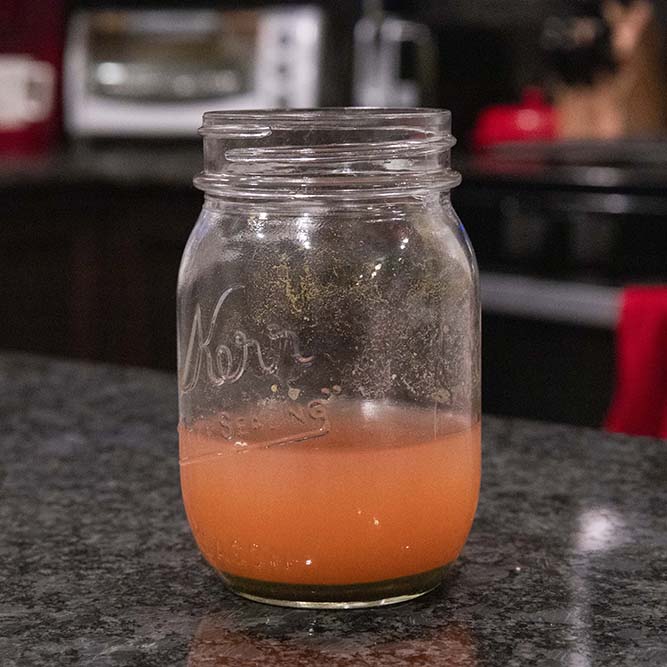
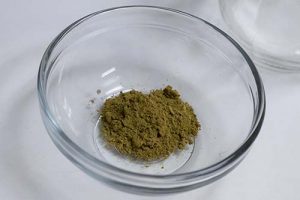
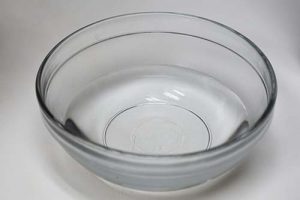
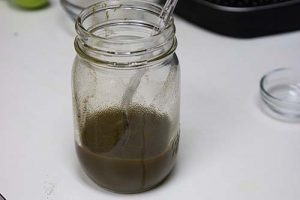
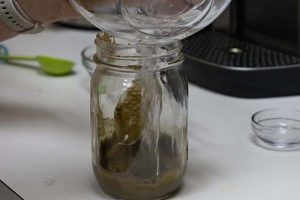
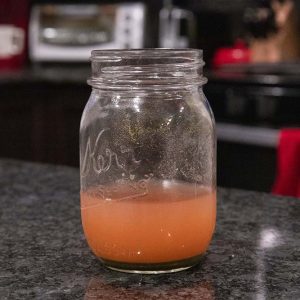




Just TRYED this don’t no where to report back to via,acetic acid